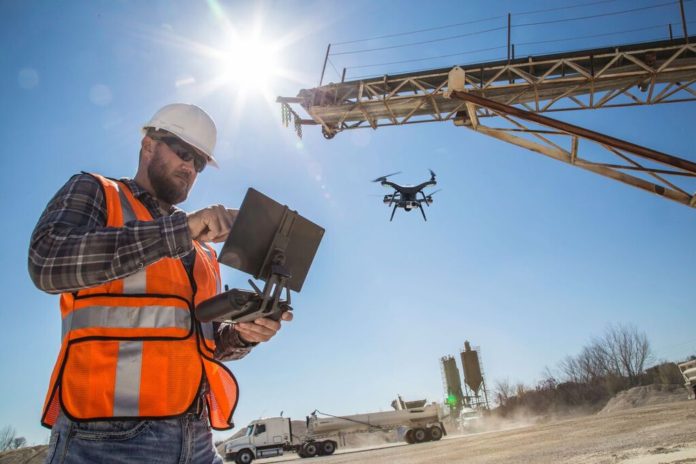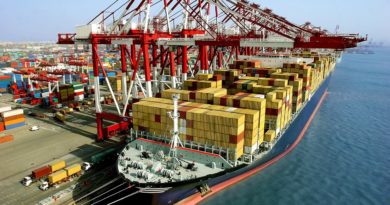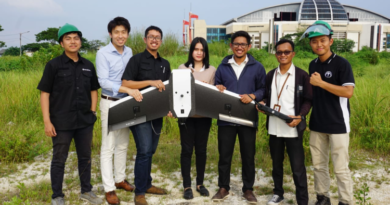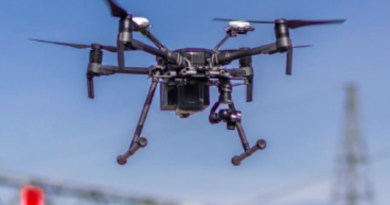10 Ways Drones Are Helping the Construction Industry
Guest post by Emily Folk
When a new construction project begins, there are many moving parts that need to be monitored. Crews, teams and partners all have to be on the same page while the project is being built, which can get messy as things progress.
To minimize the confusion and miscommunication, drones have been introduced to the construction industry. They’ve quickly begun to change how the industry operates and the jobs within it, which are only expected to continue with time.
Here are ten ways drones are helping the construction industry, so you can analyze how these trends are helping people working on projects every day.
1. They Survey More Land
Surveying land used to take a team of people and require time, but technology is making that a thing of the past for construction companies that have access to drones.
Drones can easily fly over the land that needs to be surveyed, projecting data in real-time back to the people who need it the most. They guarantee that as the data is collected, there’s no chance of human error in the resulting calculations.
This speeds up the surveying process, making it easier for crews to come up with a plan and get on the ground.
2. They Increase Communication
While traditional construction crews rely on radios and cell phones to communicate with other team members and leaders, drones step in for more modern crews to allow for instant communication.
They’re a source of constant video streaming, so everyone connected to it can see what’s going on and what needs to be done. This real-time data is invaluable.
The ability to manage current workflow allows for every construction project to get done faster and better. When everyone is on the same page, fewer mistakes are made and less time is wasted.
3. They Provide Better Marketing
Recent projects should always be posted online to provide better marketing for the company, but it’s difficult to get those images and videos quickly if the job needs to be outsourced.
Drones can complete this kind of marketing material without any extra cost. Drone videos with multiple angles and photos from all heights will provide potential clients a better idea of what their project could look like when it’s finished.
4. They Improve Surveillance
One issue that plagues many construction sites is a crime. Theft is easily made when there are no workers on-site or within seeing the distance of the materials that a criminal wants to take.
Workers can also use the lack of surveillance to slow down or stop on the job, ultimately slowing production and costing the company more money.
Unlike cameras, drone surveillance allows teams to monitor sites 24/7, from anywhere on the lot. They improve surveillance by providing peace of mind that if anything suspicious is happening on a lot, it can be caught and dealt with right away.
5. They Streamline Efficiency
Drones can check on the progress of a project and the workers on the lot, while surveying the site for safety, which all makes the efficiency of a project increase and waste decrease.
Waste can be a huge issue in the construction industry, leading to waste that can be avoided. Some of that waste leads to issues like commercial and residential buildings consuming about a third of the world’s energy. This is primarily due to heating, cooling, ventilation, lighting, water heating and cooking, which all makes reducing energy use and waste in the building process essential to global energy reduction.
Sustainability and reducing waste starts at the very beginning when those buildings are being made. Drones streamline efficiency and create an environment where waste can be acknowledged and dealt with right away, so other methods of energy reduction can be focused on.
6. They Transport Goods
Another benefit of using drones at construction sites is that they can transport goods. Depending on the size of the drone, it can carry materials across sites, even if those sites aren’t right next to each other.
That keeps team members on track while they’re on site and reduces the waste of gas when those materials are driven from one site to another. While not all materials will be able to fly with a drone, the smaller materials should be transported in this easier and more eco-friendly way.
7. They Monitor Multiple Sites
A drone’s ability to fly around freely cannot be understated. It’s of immense value to construction companies, since they’re able to monitor multiple sites at a time.
With one drone, teams can fly it directly to each site without wasting resources or time. Multiple drones can even be hooked up to the same users, so everyone who needs to can see each site at the same time.
8. They Help With Inspections
Inspections are part of the construction industry, but sometimes the timing of them isn’t always great. They may arrive too late, after issues have already been found and put workers at risk. These inspections can easily be improved by the use of drones.
Drones can inspect areas where they may be danger or safety hazards that would keep people out. Being able to identify and deal with these dangers before people even arrive at the site makes it a much safer place to work.
9. They Prevent Mistakes
It helps to have an extra eye on a construction site to make sure any deliveries or shipments are correct the first time around, but drones also help prevent mistakes by creating maps.
They compile high-resolution images from all locations of a construction site, which can then be put into a program that turns them into 3D models and 2D orthophotos. These visual representations are more interactive and help identify future issues and paths to success for the project.
10. They Encourage Collaboration
No team is successful unless there’s communication and collaboration. While one can be accomplished with a phone call or radio signal, collaboration can prove a bit more challenging.
The technology that drones use allows for visual collaboration and easier communication, so everyone knows what to do and where to go with the site. Drones are an important investment more and more construction sites will be making in the near future, as they have so many benefits for the teams involved with a project.
Author Bio:
Emily is a green tech writer who covers topics in renewable energy and sustainable design. You can read more of her work on her blog, Conservation Folks.




First, i wanna say to thanks its moderator for incredible technology that is helped in every field of life and also give the way learning something new.